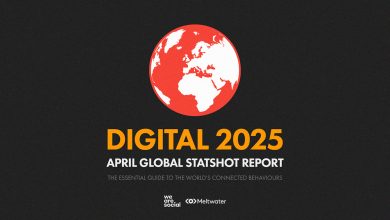MANILA, PHILIPPINES — The pandemic has resulted in new consumer behaviors emerging in the Philippines, where more Filipinos are starting to go on digital commerce platforms and make cashless payments. According to Visa’s latest Consumer Payment Attitudes study, 52 percent of Filipinos shopped online through apps and websites for the first time during the pandemic and 43 percent of them made their first online purchase using social media channels.
Online shopping activity has also increased in the past year based on the research findings. Close to nine in 10 Filipinos have increased their online shopping activities on websites or apps, whilst seven in 10 are shopping more on social media channels. More than half of the consumers are also more inclined to shop from large online marketplaces (53%) and home-based businesses (61%). These new shopping preferences might turn into habits that last beyond the pandemic.
The study also showed a large user base who started ordering home delivery, likely due to lockdowns or movement restriction orders in the country during the pandemic. More than 9 in 10 Filipinos used home delivery in the Philippines and 67 percent of them increased their use of home delivery services during the pandemic.
“The pandemic has transformed the way Filipinos shop and pay. Based on the latest highlights from our annual Visa Consumer Payment Attitudes study, we see the adoption of new consumer behaviors including more Filipinos using digital commerce platforms and helping to accelerate the usage of digital payments in the country. Based on Visa’s data, we see double-digit growth for eCommerce transactions for purchases on marketplaces and digital goods. In addition, one in four active Visa cardholders made their first eCommerce purchase during the first half of last year. Categories that they made their initial purchases include food & groceries, bill payments, and pharmaceutical products,” said Dan Wolbert, Visa Country Manager for the Philippines & Guam.
Pre-pandemic, more than seven out of 10 payments were made using cash compared to the current usage of five out of 10. This trend of consumers carrying less cash is similar in other Southeast Asia countries. Filipinos cited using more contactless payments (73%), perceiving cash as unsafe because of the potential spread of infection (54%), and more places adopting digital payments (50%) as the top reasons for carrying less cash. In addition, Filipinos see bill payments (81%), grocery shopping (71%), and overseas travel (68%) as the top categories where they would likely go completely cashless in future.
The study also showed that contactless payments had a 66 percent increase in usage amongst current users due to the pandemic. In addition, 88 percent of Filipinos who had not used contactless payments stated interest in using this payment method in the future. Top benefits perceived by Filipinos for the usage of contactless cards include not having to carry cash with them (88%), feeling safe from infection (75%), and being an innovative payment method (68%).
“Based on Visa’s data, contactless transactions have been increasing steadily month-on-month in the Philippines since August last year. We believe that contactless payments will continue to grow as Filipinos appreciate the benefits of contactless payments, including perceiving this payment method to be more hygienic due to the absence of physical interaction at point-of-sale. Even though we’ve made progress in digital payments adoption, there remain huge opportunities for us to encourage more Filipinos to embrace digital payments as we look to expand digital payments acceptance across the country,” added Dan.
In the hope that the pandemic will soon be under control, consumers see travel as the top category that they most look forward to spending on when borders reopen. The study showed that 30 percent of Filipinos look forward to domestic travel and 22 percent would like to spend on international travel post COVID19.










